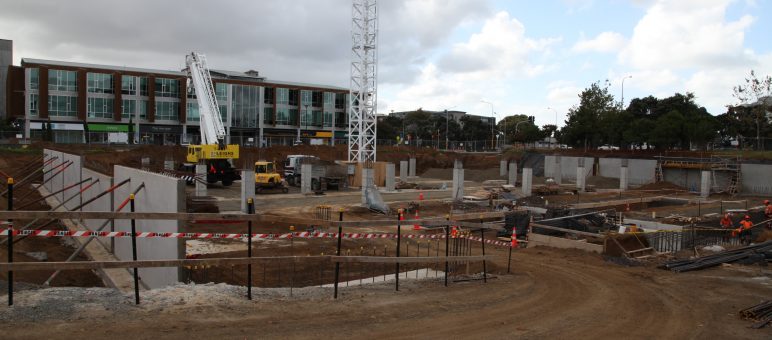Real life scenarios put Leighs Construction to the test
Leighs Construction has a staff of about 270 working nationwide but on any given day they could be responsible for up to 1500 people working on their sites.
That’s the reality for a large construction company with many contractors and that adds a whole new dimension when dealing with a crisis.
Kestrel group recently put Leighs Construction through its paces both north and south in two separate crisis situation exercises. In Auckland the scenario involved a crane incident on site where the operator had suffered a medical event and as a result two workers on the ground were also injured.
In Dunedin, Leighs Construction is currently working on site at the University of Otago. The exercise scenario consisted of drunken students breaching site security with one suffering a severe injury leading to death.
Sophie Lackey, Leighs’ Corporate Service Advisor, says the company initially wanted to run their own crisis management exercises but quickly realised the importance of having the element of surprise and the need to have an external party run the exercises for them.
“If we did it ourselves I would know the scenario, our health and safety people would know the scenario and we would be somewhat prepared and know what’s going to happen. You need to be able to think on your feet, so like everyone else we only found out on the day – it was as close to real life as possible.”
Sophie says the objective was to test the crisis management team. “Our policies and procedures are put to the test quite a lot but not our crisis management response – so we needed to simulate real life scenarios for us to practice on.
“The Auckland scenario was a good opportunity to practice our on-site response and showed us that we are generally doing the right things and do have the right policies and procedures in place.
“It did highlight some things we could do better like dealing with the media – we do have a media policy but we needed to revisit it especially in this day and age of social media.”
Sophie says this exercise helped highlight the role social media now plays and was a good reminder that something that happens on site, like a crane toppling over, could be recorded by a member of the public and posted on social media within seconds.
Both exercises confirmed for us that we are doing the right things – but you don’t know you’re doing the right thing until you test it – you don’t want to be dealing with an actual crisis the first time you test things out, says Sophie.
Even so there are things the company will be doing to fine tune and tweak its plans.
“During the scenario at Otago University we also faced a pretend cyber threat that took out our intranet and video conferencing facilities. This made us realise how reliant we are on technology for everything and how much we take that for granted. It highlighted the need to have some paper based check lists on site and even some flow charts for when to activate a crisis and who to contact. A lot of our guys on site don’t have access to computers so they need a simple guide to follow. A lot of these guys are our contractors as well so we need to make sure they know what to do in a crisis as well.
“The big reminder from the exercise was that we are responsible for anyone on our site whether that is an employee, a contractor or a member of the public.”
Sophie says working with Kestrel was really great. “They understood our business and our need for these exercises to be as close as possible to real life – they did the research and tailored the scenarios specifically for us.

